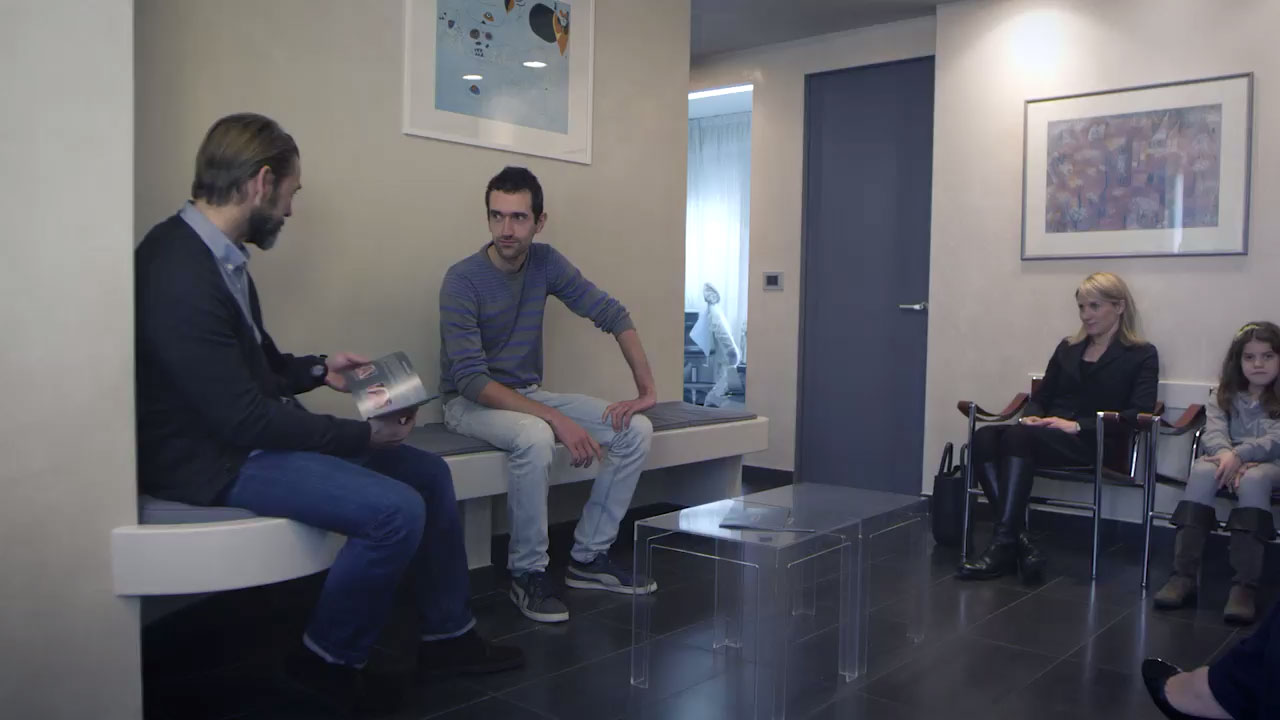
Surgery
Valenti Dental Practice is also at the forefront of Odontostomatological surgery. A thirty-year experience, training and continuous updates in Italy and abroad and collaborations with the prestigious University of Milan allow us to feel at ease with any kind of intervention.
The clinic has also invested not only in the techniques but also in the diagnostic and control tools. Thanks to the latest generation Cone Bean CT and low radiant dose we can quickly and in the same session diagnose and explain treatment plans to our patients. Thanks to the instruments that monitor vital parameters and Conscious Sedation we can intervene even in the most complex cases and in the most odontophobic patients in extreme tranquillity.
Regenerative surgery (implant)
In our study we perform daily interventions of horizontal, vertical and inlay bone regeneration (maxillary sinus lift), using autologous (intraoral) and / or synthetic bone grafts.
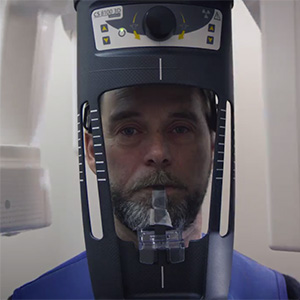
The procedures used comply with the most modern surgical techniques that include the use of resorbable, non-resorbable membranes and the use of titanium osteosynthesis plates and screws and the use of diagnostic tools such as the latest generation Cone Bean CT. The highest standards of sterilization and sterile preparation of the operative field are applied in compliance with what is indicated and approved by the world scientific literature.
The choice of using intraoral and non-estraoral samples (cranial or hip) allows the highest probability of integration of grafts with the least postoperative discomfort for the patient. These, often long and complex interventions, can also be performed in Conscious Sedation ensuring maximum comfort for the patient.
Surgery of Impacted Teeth
The teeth that are most frequently prone to disodontiasis are the third molars (wisdom teeth) and the canines (mainly upper jaw). The extraction of these teeth requires experience and special attention because of their proximity (lower third molars) with important anatomical parts, which if damaged can lead to temporary or permanent paresthesias up to the anesthesia of the lower lip. The lower wisdom molars can be semi-included and therefore only partially covered by the gum or totally included (under the gingiva or even completely inside the bone).
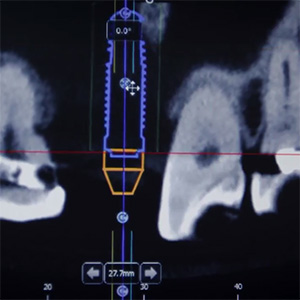
In addition to the vertical position, inclination can also lead to additional difficulties in extraction. Thanks to the Cone Beam CT we can know with maximum precision the three-dimensional position of the tooth with respect to the nerve structures ensuring greater safety in surgical procedures.
The included upper canines are often recoverable and can be reported in the arch with a combined approach both surgical and orthodontic. As for regenerative surgery in our study we respect the highest standards, hygienic and operative, even in cases of extraction of third molars or other impacted elements. Extractions of impacted teeth are carried out for therapeutic (even preventative), prosthetic or orthodontic reasons.
Cyst of the jaws
Cysts are lesions that can form in the area of the maxillary bones. These may have an odontogenic or non-odontogenic origin and are otherwise invasive in the maxillary bones. By their very nature cysts tend to expand continuously and this is one of the main reasons why they have to be removed (remove the wall to leave the cavity that contains them to be filled with new bone).
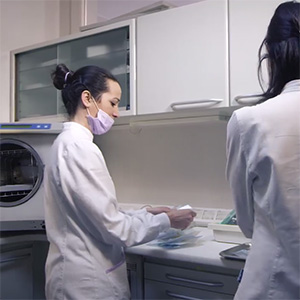
There exist some types of cysts that are considered extremely invasive and therefore comparable to tumor formations. Not removing a cyst can lead to the loss of the involved dental elements or in the worst cases to the fracture of the mandibular bone, in case the cyst has almost completely eroded it.
If a dental element is included within a maxillary cyst, with special techniques this element can be restored in the arch with the collaboration of orthodontics. Like any oral lesion, the cysts must be analysed by the pathologist for a histopathological analysis of the incisional biopsies or of the entire lesion, when appropriately removed.
Advanced implantology
The modern implantology was born thanks to the discoveries of Branemark who studied the ability of the bone to grow and adhere to titanium surfaces. Today, thanks to this discovery, the bony structures can be replaced in any district of the body. Titanium screws can replace lost tooth roots and dental crowns can be mounted on this screws, completely attached to the bone) with excellent functional and aesthetic performance.
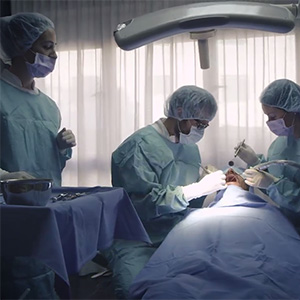
For over twenty-five years, Valenti’s dental practice uses surgical and implant techniques to restore patients’ masticatory function with fixed prostheses on osseointegrated implants. This way, our patients are not forced to accept total or partial removable prostheses and can hugely increase chewing and psychological comfort. When teeth are extracted (if still present but irremediably lost), immediate implant and prosthesis placement (the patient receives the implants and crowns prosthetic in the same day) are more and more frequent.
The surgical interventions to place implants are carried out with extreme attention to the wellbeing and comfort of the patient, trying to reduce any trauma to a minimum, thus reducing recovery periods to a minimum. Furthermore, there is the possibility to perform the surgery in Conscious Sedation (see below), guaranteeing an experience that is also psychologically quite atraumatic. As for the teeth, the implants must also be maintained with excellent oral hygiene and periodic consultations. In fact, even implants can be susceptible to infections of the supporting tissues (peri-implantitis).
Patients who undergo surgery for the insertion of titanium implants are followed very closely in order to help them to maintain oral hygiene at home, a fundamental prerequisite for the longevity of implant prostheses.
Conscious sedation
This is a technique that, through the use of oral and intravenous drugs, produces a state of total relaxation of the patient, allowing the finalization of dental therapeutic procedures. It is not general anesthesia. During the intervention the patient is perfectly conscious.
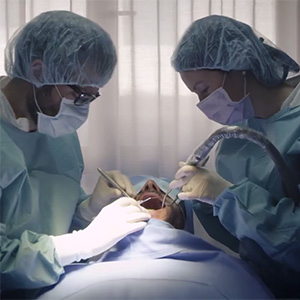
According to recent research, 30% of the population in Italy suffers from "fear of the dentist", while 10-15% are affected by real forms of "phobia" (odontophobia). The different threshold to anxiety and fear seems to be genetically coded, but it is often the result of negative experiences of the past. Many people, out of fear, postpone visits and dental treatments (avoidance) until they come to serious consequences from a functional (chewing) and aesthetic point of view, with the result of worsening their health over the years requiring more complex and more expensive treatments.
Conscious sedation is the ideal solution for these subjects. It aims to eliminate fear and anxiety and allows to reach a state of total relaxation, while perfectly maintaining the state of consciousness. In fact, the patient is always able to respond to the verbal recalls of the operator and the anaesthetist. The technique is also recommended in people suffering from diseases at high risk of decompensation (cardiac, respiratory, diabetic, etc.), because anxiolysis and the absence of stress protect the patient from the risks of a worsening of the underlying disease.
An accurate visit, made a few days before the intervention, will allow us to evaluate the general patient's health, framing it in one of the categories (ASA) established by the American Society Anesthesiologists, and to measure the anxiety levels through specific tests ( Corah test, VAS). The patient is informed of the need to be accompanied by an adult person the day of surgery.
During the operation, the patient is "monitored" for vital functions, through clinical observation and instrumental evaluation (electrocardiogram, heart rate, blood pressure, respiratory frequency, oxygen saturation). Conscious sedation in expert hands is a safe and absolutely risk-free technique.
